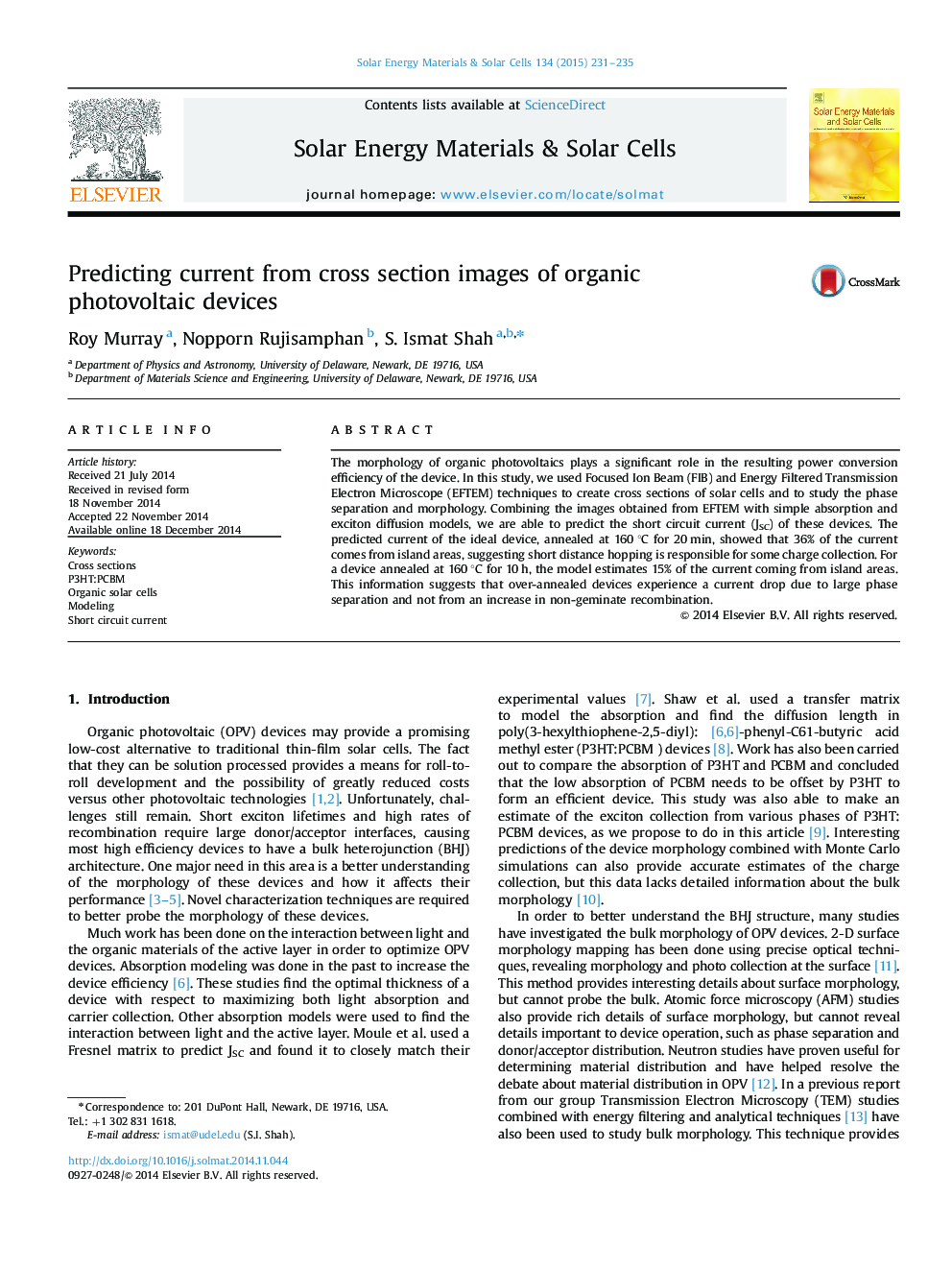| Article ID | Journal | Published Year | Pages | File Type |
|---|---|---|---|---|
| 77912 | Solar Energy Materials and Solar Cells | 2015 | 5 Pages |
•Cross sections of P3HT:PCBM solar cells were fabricated using a focused ion beam.•Energy filtered TEM images revealed the phase separation in these cross sections.•Modeling the absorption and exciton diffusion predicted short circuit current.•Predictions were matched to experimental results.
The morphology of organic photovoltaics plays a significant role in the resulting power conversion efficiency of the device. In this study, we used Focused Ion Beam (FIB) and Energy Filtered Transmission Electron Microscope (EFTEM) techniques to create cross sections of solar cells and to study the phase separation and morphology. Combining the images obtained from EFTEM with simple absorption and exciton diffusion models, we are able to predict the short circuit current (JSC) of these devices. The predicted current of the ideal device, annealed at 160 °C for 20 min, showed that 36% of the current comes from island areas, suggesting short distance hopping is responsible for some charge collection. For a device annealed at 160 °C for 10 h, the model estimates 15% of the current coming from island areas. This information suggests that over-annealed devices experience a current drop due to large phase separation and not from an increase in non-geminate recombination.
